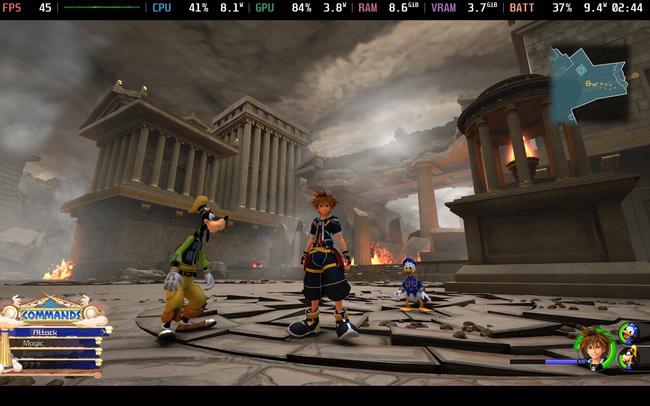It feels kind of wild that it’s been over 3 years since I first looked at it Kingdom Hearts IIIan excellent PC port and a lot has changed for the PC market since then. Most notably, the Steam Deck popularized the gaming handheld and expanded the need for companies to at least test their games for Linux compatibility with Proton. Since any modern PC will be able to run any of the Kingdom Hearts games for PS2 or 3DS, I thought it made a lot more sense to focus on how these updated ports are handled in the Steam Deck.
Advertising. Keep scrolling for more
Part of that is because the older Epic Games Store versions of these games had some mixed results running on Steam Deck, even discounting the hoops one has to jump through to even play them on the device. Thankfully, Square Enix has hired a third party to help them iron out any major issues before they finally release the games on Steam. The results? Barring a few remaining minor issues, these will probably be my new preferred ways to play the games.
First things first; HD 1.5 + 2.5. These were the real problem children when it came to Steam Deck compatibility in the past, with many compatibility quirks even on Windows-based PCs. In the interest of time – and in search of one particular potential problem – I chose to run Re: Chain of Memories through the collection. Right off the bat, the FMV cutscene at the beginning of the game plays without any issues and without requiring any settings. Performance once properly in-game was also flawless, with over 5 hours of battery life at your disposal on the Deck OLED while running the game at a target of 90 FPS. If you’ve ever tried to run Steam Deck games before these new ports, you’ll know how big of a deal this is.
The same can be said for Kingdom Hearts and Kingdom Hearts II, although it’s worth noting that in each of these games you may encounter cutscenes that run at 30 FPS regardless of your settings. Also, although there’s an option to set the game’s resolution to 800p, none of the games I’ve tested can actually use that full-screen real estate and will just run internally at 720p without stretching the output, for to fit the entire display. It’s better than the alternative, but it’s at least a bit of a shame that native 16:10 support wasn’t added alongside the more important Steam Deck compatibility fixes.

This is where I jumped into Kingdom Hearts III, and as expected, players will have to make sacrifices depending on their preferred gaming experience when it comes to their chosen graphics settings and internal resolution. I pointed out that the lack of fine-grained control over the port’s internal resolution was probably my one major complaint back in the day, and that goes doubly so for Steam Deck performance – where 60 FPS would probably be just as achievable at 85% resolution scaling as it is with 75% such. To be clear; the game still runs pretty well regardless.
At the medium preset and at 100% resolution scale, players can expect a near-locked 45 FPS – only saying “almost-locked” due to the nature of playing games before the Deck’s release, which introduces the issue of shader build stuttering. At 75% resolution scale you’ll be good for 60 FPS – for either option I’d say I’d expect about 3 hours of playtime on the Deck OLED. Expect closer to 2 hours for an original model; and of course you can increase battery life by playing at 30 FPS, even if I personally would never do that. Our time was limited before the embargo, and as such I didn’t get to test it as much as I would have liked, but I would guess a similar if not slightly better performance in 0.2: Birth of a Dream – Fragmentary Passage.

Advertising. Keep scrolling for more
One issue that most players probably won’t care about is that Kingdom Hearts III currently doesn’t allow the player to enable HDR on Deck OLED. Personally, I’ve found the game’s HDR implementation to be pretty good in the past, so hopefully this issue can be ironed out without much post-launch lag; I guess it will. Other than that though, I don’t really have any complaints about the state of the Steam Deck games.
It may have taken us too long to get here, but there’s finally a manual solution to playing the entire Kingdom Hearts series that doesn’t require you to be connected to an internet connection. For many RPG fans, this is probably a dream come true – and I can’t blame them. Kingdom Hearts is worth playing on Steam Deck; whether it might be your first time experiencing Sora’s Journey or your tenth time.
The code was provided to RPG Site for the purpose of this coverage.



